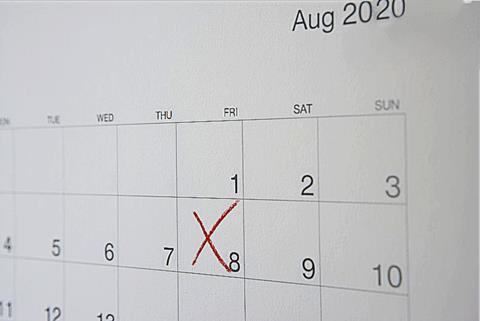An article on approaches to teaching the prepositions of time and place, at, in and on.

Introduction
Why do we say The bank is on Grimshaw Lane. and She lives at 132 Gainsborough Avenue, but not She lives in 132 Gainsborough Avenue' or The bank is at Grimshaw Lane?'
Many learners and even some teachers view the usage and meaning of prepositions as a secret that can’t be unlocked. However, if we examine the syntactic environments of such key prepositions systematically, patterns of usage and core meaning concepts emerge which can aid explanation and learning.
The prepositions at, in and on are often used in English to talk about places (positions) and times. Sometimes the choice of one over another in a particular phrase or sentence seems arbitrary. However, if we analyse patterns of occurrence we can identify key concepts in meaning and usage which consistently apply and can be used as a platform for learning.
Prepositions of time
The preposition at is used in the following descriptions of time:
With clock times
- My last train leaves at 10:30.
- We left at midnight.
- The meeting starts at two thirty.
With specific times of day, or mealtimes
- He doesn’t like driving at night.
- I’ll go shopping at lunchtime.
- I like to read the children a story at bedtime.
With festivals
- Are you going home at Christmas/Easter?
In certain fixed expressions which refer to specific points in time
- Are you leaving at the weekend?*
- She’s working at the moment.
- He’s unavailable at present.
- I finish the course at the end of April.
- We arrived at the same time.
*Note that in American English, on the weekend is the correct form.
The preposition in is used in the following descriptions of time:
With months, years, seasons, and longer periods of time
- I was born in 1965.
- We’re going to visit them in May.
- The pool is closed in winter.
- He was famous in the 1980’s.
- The play is set in the Middle Ages.
- They’ve done work for me in the past.
With periods of time during the day
- He’s leaving in the morning.
- She usually has a sleep in the afternoon.
- I tried to work in the evening.
To describe the amount of time needed to do something
- They managed to finish the job in two weeks.
- You can travel there and back in a day.
To indicate when something will happen in the future:
- She’ll be ready in a few minutes.
- He’s gone away but he’ll be back in a couple of days.
The preposition on is used in the following descriptions of time:
With days of the week, and parts of days of the week
- I’ll see you on Friday.
- She usually works on Mondays.
- We’re going to the theatre on Wednesday evening.
Note that in spoken English, on is often omitted in this context, e.g. I’ll see you Friday.
With dates
- The interview is on 29th April.
- He was born on February 14th, 1995.
With special days
- She was born on Valentine’s Day.
- We move house on Christmas Eve.
- I have an exam on my birthday.
If we examine these different aspects of usage for the three prepositions, a general pattern emerges. At is generally used in reference to specific times on the clock or points of time in the day. In generally refers to longer periods of time, several hours or more. On is used with dates and named days of the week.
Prepositions of place
The preposition at is used in the following descriptions of place/position:
With specific places/points in space
- She kept the horse at a nearby farm.
- I had a cup of coffee at Helen’s (house/flat).
- Angie’s still at home.
- I’ll meet you at reception.
- There’s a man at the door.
- I saw her standing at the bus stop.
- Turn right at the traffic lights.
- The index is at the back of the book.
- Write your name at the top of each page.
With public places and shops
- Jane’s at the dentist/hairdresser.
- I studied German at college/school/university.
- Shall I meet you at the station?
- We bought some bread at the supermarket.
With addresses
- They live at 70, Duncombe Place.
With events
- I met her at last year’s conference. She wasn’t at Simon’s party.
The preposition on is used in the following descriptions of place/position:
With surfaces, or things that can be thought of as surfaces
- The letter is on my desk.
- There was a beautiful painting on the wall.
- The toy department is on the first floor.
- Write the number down on a piece of paper.
- You’ve got a dirty mark on your jumper.
- He had a large spot on his nose.
- She placed her hand on my shoulder.
With roads/streets, or other things that can be thought of as a line, e.g. rivers
- The bank is on the corner of King’s Street.
- Koblenz is on the Rhine.
- Bournemouth is on the south coast.
- It’s the second turning on the left.
The preposition in is used in the following descriptions of place/position:
With geographical regions
- Driving in France is very straightforward.
- Orgiva is a very small village in the mountains.
With cities, towns and larger areas
- Do you like living in Nottingham?
- They were having a picnic in the park.
- She works somewhere in the toy department.
With buildings/rooms and places that can be thought of as surrounding a person or object on all sides
- Can you take a seat in the waiting room, please?
- I’ve left my bag in the office.
- There’s a wedding in the church this afternoon.
- Lots of people were swimming in the lake
With containers
- There’s fresh milk in the fridge.
- I think I’ve got a tissue in my pocket.
- The money is in the top drawer of my desk.
With liquids and other substances, to show what they contain
- Do you take milk in your coffee?
- I can taste garlic in this sauce.
- There’s a lot of fat in cheese and butter.
A general pattern again emerges if we consider these different aspects of usage. We can think of at as one-dimensional, referring to a specific place or position in space. On is two-dimensional, referring to the position of something in relation to a surface. In is by contrast three-dimensional, referring to the position of something in relation to the things that surround it. Thinking of the prepositions in these terms helps us explain certain facts. For instance, in is generally used for larger places and at for smaller, more specific places, so we say:
But:
However, if we think of a city or larger place as a specific point in space, we can use at, e.g.
Or if we think of a smaller place as three-dimensional, we can use in, e.g.
Prepositions at/in/on – extended meanings
A systematic analysis of the occurrence of the prepositions at, in and on in their core usage as indicators of time and place, helps us establish some key meaning concepts which will aid us in identifying and explaining their extended meanings:
at – is a mechanism for denoting the specific, it usually refers to fixed points in time (e.g. clock times) and specific points in space.
on – is a mechanism which usually describes something in relation to a second, often linear dimension, hence it relates to the calendar (days and dates) and surfaces or lines.
in – is a mechanism for describing something in relation to the things that surround it in time or space, hence it relates to periods of time and three-dimensional spaces or containers.
Extended meaning of at
At is used for showing specific temperatures, prices and speeds:
Tickets are now on sale at £15 each.
He denied driving at 110 miles per hour.
And more generally to talk about the level or rate of something:
Interest rates have stayed at this level for several months.
The loan repayments are going up at an alarming rate.
At is used to show when someone is a particular age:
He began composing at the age of 5.
She chose not to retire at 65.
At is used to show that an activity is directed specifically towards someone or something:
He’s always shouting at the children.
Jamie threw the ball at the wall.
Why are you staring at her like that?
At is used to show the specific cause of a feeling or reaction:
Audiences still laugh at her jokes.
We were rather surprised at the news.
Extended meanings of on
On is used to show movement in the direction of a surface:
We could hear the rain falling on the roof.
I dropped my bags on the floor.
On is used to show when the surface of something accidentally hits or touches a part of the body:
I cut my finger on a sharp knife.
She banged her head on the cupboard door.
On is used to show that a part of someone’s body is supporting their weight:
She was balancing on one leg.
He was on his hands and knees under the table.
On is used to show that something is included in a list:
He’s not on the list of suspects.
How many items are on the agenda?
Extended meanings of in
In is used to show movement towards the inside of a container, place or area:
She put the letter back in her briefcase.
The farmer fired a few shots in the air.
In is used to show when something is part of something else:
I’ve found one or two spelling mistakes in your essay.
Who’s the little girl in the photograph?
There are several valuable paintings in the collection.
In is used to show that someone is wearing something:
Do you know that girl in the black dress?
A man in a brown suit was walking towards her.
In is used to show how things are arranged, expressed or written:
We gathered round in a circle.
Their names are given in alphabetical order.
Complete the form in block capitals.
She spoke to me in Spanish.
Nouns and phrases

Our experts provide a compendium of tips and ideas for teaching nouns, prepositions and relative clauses in English.
- 1
- 2
- 3
 Currently
reading
Currently
reading
Prepositions of time and place - article
- 5
- 6
- 7
- 8
- 9
- 10
- 11
- 12











No comments yet